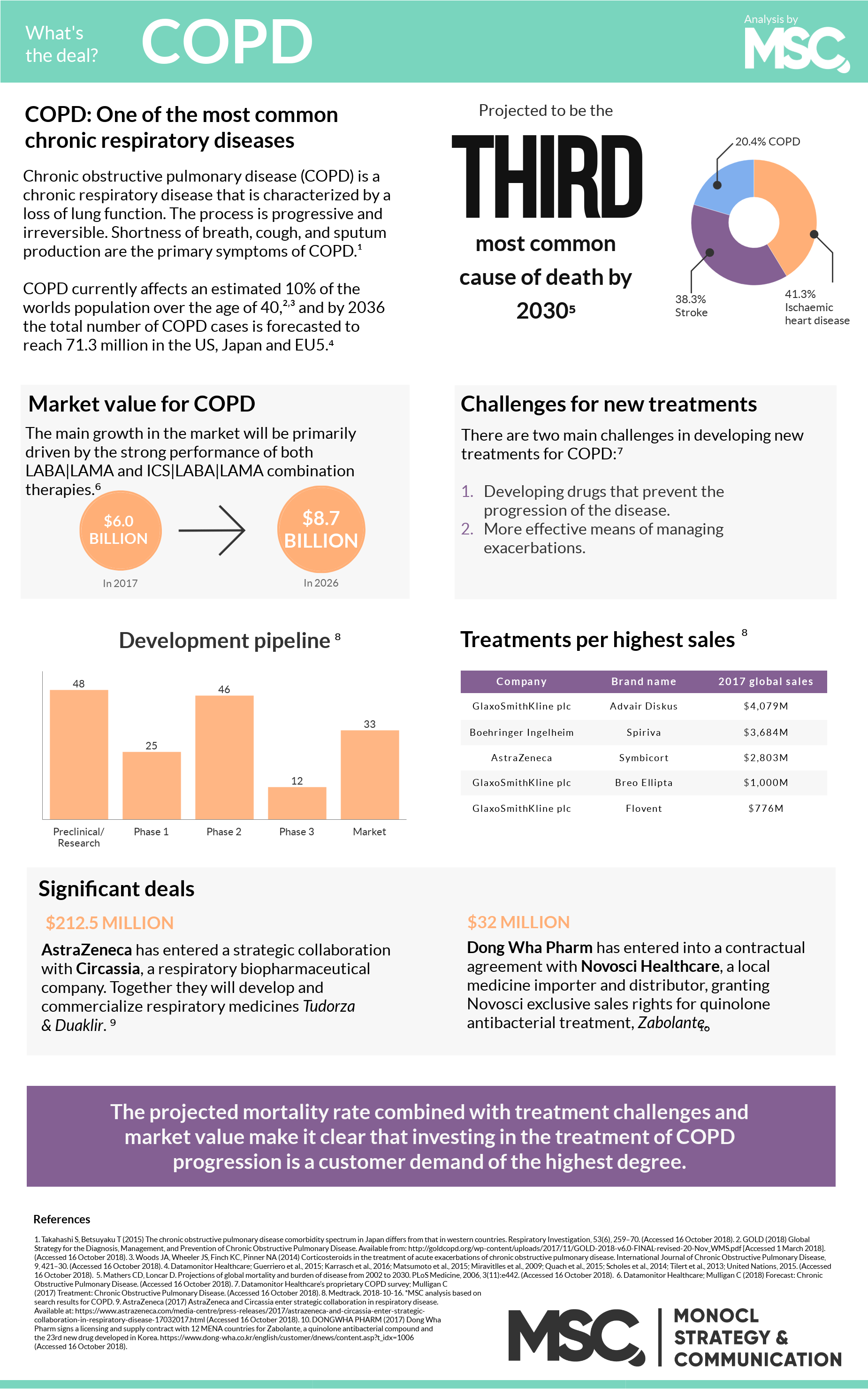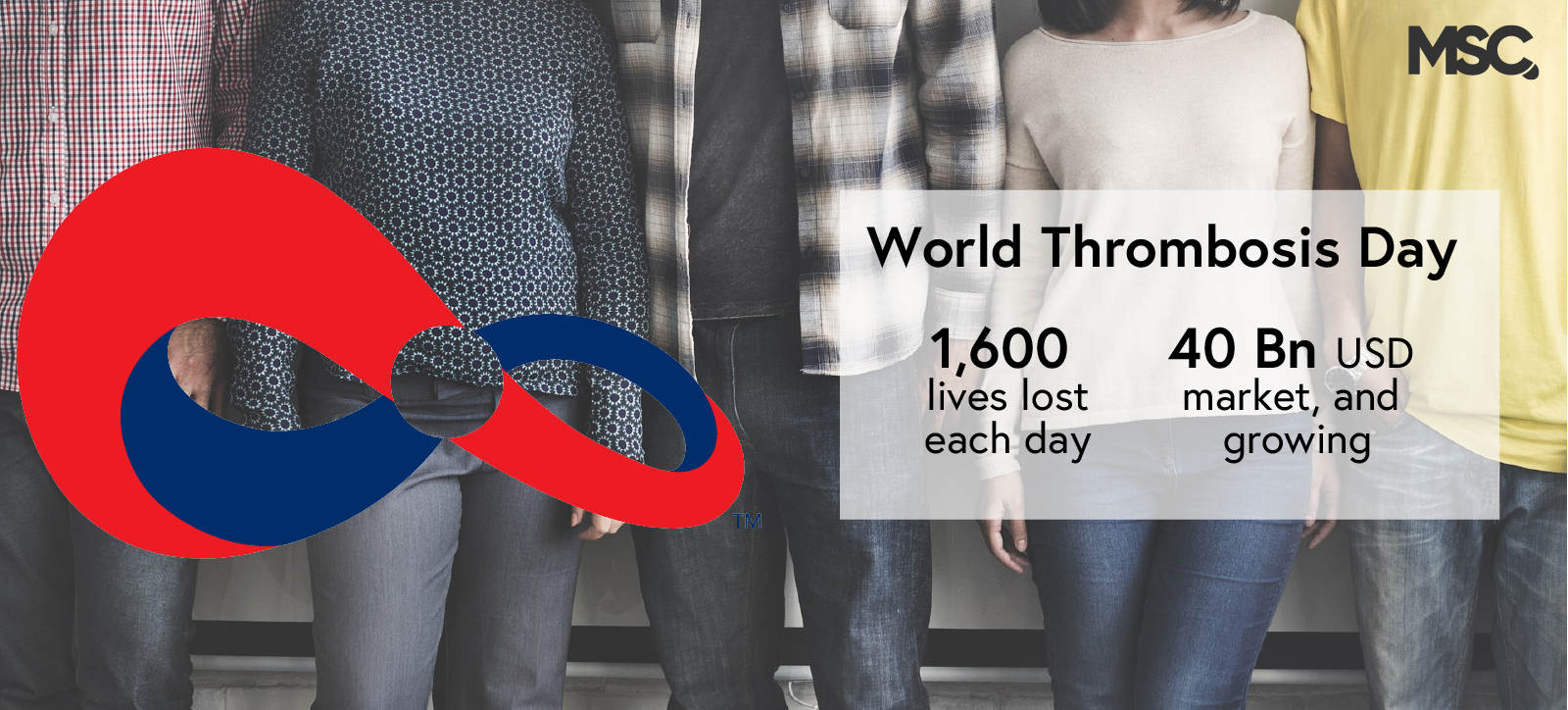This week marks Respiratory Care Week, and this provides us with a strong reason to give some enlightenment on society’s most common chronic respiratory disease: Chronic Obstructive Pulmonary Disease, or COPD. An estimated 10% of the world’s population over the age of 40 suffer from COPD,2,3 which is characterized by a loss of lung function.1 The disease is both a progressive and irreversible process.
As noted by the World Health Organization, COPD will tragically cause over 3 million deaths each year. If that is not alarming enough, by 2036 it is forecasted that the total number of COPD cases will increase to 71.3 million in the US, Japan, and the EU5.4 If this number is reached, COPD will be the 3rd most common cause of death in the world.
Affected persons suffer shortness of breath, coughing, and sputum production. These primary symptoms worsen until the lungs are no longer able to function. COPD originates as an abnormal inflammatory response to inhaled irritants. These irritants can be of solid or gas form, such as cigarette smoke. In fact, cigarette smoking is the primary driver in the pathogenesis of COPD.1 This fact has clearly been linked to global trends. This means that patient prevalence is falling, or remaining stable, in developed high-income countries where smoking prevalence has decreased. But on the other end, COPD diagnoses is sadly predicted to increase in countries that do not fall into this category.4 Besides cigarette smoking, air pollution and occupational exposure are also important factors in the development of the condition.
It is important to shed light on the fact that the diagnosis of COPD is severely misrepresentative of the actual numbers. The condition is underdiagnosed mainly because the only objective diagnostic method, spirometry, is not widely employed in clinical settings. Other factors that contribute to global underdiagnoses include patients not reporting symptoms until they reach a more severe stage.5 The underdiagnoses of the disease causes many patients to suffer symptoms that can be treated much earlier. This signifies the urgency of improving diagnostic methods and increasing patient awareness of the disease, so that the number of patients that suffer the symptoms of COPD can be reduced.
…the diagnosis of COPD is severely misrepresentative of the actual numbers.
Since there is no present cure for COPD, the biotech and pharmaceutical industry are putting their main focus on making sure that persons affected by the disease are relieved of the tough symptoms they need to endure. Provided in the form of an inhaler, bronchodilators, inhaled steroids, and anti-inflammatory agents are the main treatment options. There are currently 33 treatments on the market and many more making their way through the pipeline.6 Some of the most common treatments are GlaxoSmithKline’s Advair Diskus and AstraZeneca’s Symbicord, averaging around 4 and 2.8 billion USD in worldwide sales in 2017, respectively.7
Taking all these issues into consideration, it is obvious that there is a need to both cure the condition and find major improvements in diagnosing patients. The projected mortality rate and market value reflect a major societal interest in focusing attention on COPD, and we hope to have shed light on this.




